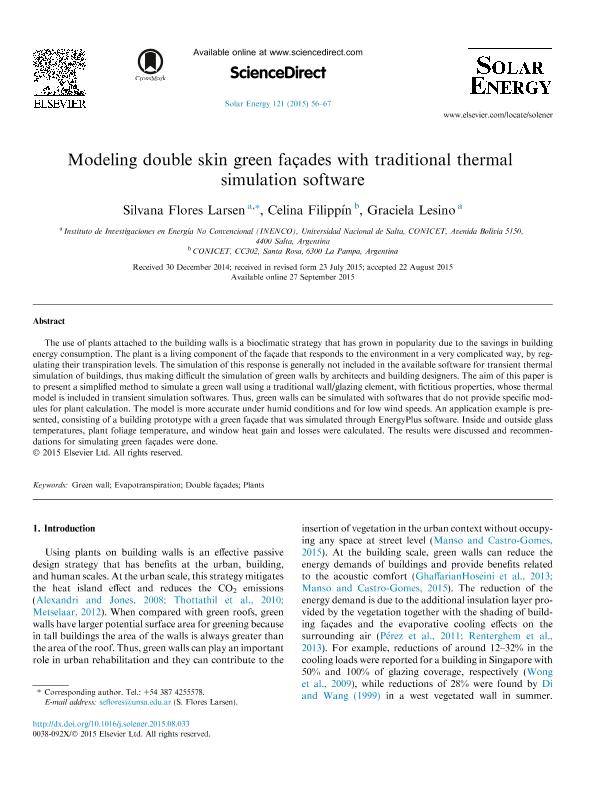Artículo
Modeling double skin green façades with traditional thermal simulation software
Fecha de publicación:
09/2015
Editorial:
Pergamon-Elsevier Science Ltd
Revista:
Solar Energy
ISSN:
0038-092X
Idioma:
Inglés
Tipo de recurso:
Artículo publicado
Clasificación temática:
Resumen
The use of plants attached to the building walls is a bioclimatic strategy that has grown in popularity due to the savings in building energy consumption. The plant is a living component of the façade that responds to the environment in a very complicated way, by regulating their transpiration levels. The simulation of this response is generally not included in the available software for transient thermal simulation of buildings, thus making difficult the simulation of green walls by architects and building designers. The aim of this paper is to present a simplified method to simulate a green wall using a traditional wall/glazing element, with fictitious properties, whose thermal model is included in transient simulation softwares. Thus, green walls can be simulated with softwares that do not provide specific modules for plant calculation. The model is more accurate under humid conditions and for low wind speeds. An application example is presented, consisting of a building prototype with a green façade that was simulated through EnergyPlus software. Inside and outside glass temperatures, plant foliage temperature, and window heat gain and losses were calculated. The results were discussed and recommendations for simulating green façades were done.
Palabras clave:
Green Wall
,
Evapotranspiration
,
Double FaÇAdes
,
Plants
Archivos asociados
Licencia
Identificadores
Colecciones
Articulos(INENCO)
Articulos de INST.DE INVEST.EN ENERGIA NO CONVENCIONAL
Articulos de INST.DE INVEST.EN ENERGIA NO CONVENCIONAL
Articulos(SEDE CENTRAL)
Articulos de SEDE CENTRAL
Articulos de SEDE CENTRAL
Citación
Flores Larsen, Silvana Elinor; Filippin, Maria Celina; Lesino, Graciela; Modeling double skin green façades with traditional thermal simulation software; Pergamon-Elsevier Science Ltd; Solar Energy; 121; 9-2015; 56-67
Compartir
Altmétricas




